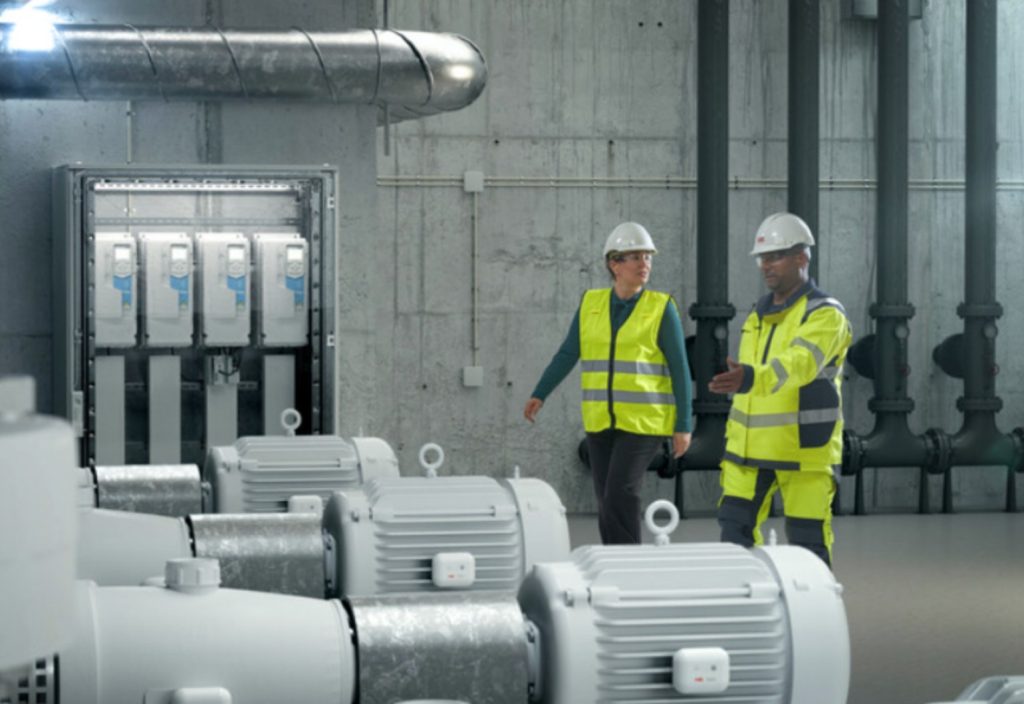Industrial motors consume 45% of the world’s power. Replace older electric motors with ABB’s high-efficiency motor-drive package to cut energy losses by up to 50%.
In 2021, the European Union set IE3 as the minimum efficiency level required for most electric motors – ie, 3-phase motors with an output of 0.75kW to 1000kW.
Goutam Agashe, Product Specialist for Low Voltage Motors at ABB Australia, says the EU’s decision to establish a minimum standard for IE3 was a significant development.
“Regulating motor efficiency was the first step, and it intends to make electric motors and drives more efficient, with the aim of saving 110 terawatt hours per year in the EU region alone. It’s a staggering number,” says Agashe.
To put that in context, it would save enough energy to power the entire Netherlands for one year.
Australia, however, hasn’t yet regulated the minimum efficiency of IE3 required for electric motors, says Agashe.
“We hardly sell any IE2 motors in Australia and the government recommends that industry try and use high efficiency motors such as the IE3, but it isn’t mandated. IE2 is still acceptable here but it’s likely that regulations will be enforced here in the next 2-3 years that make IE2 virtually obsolete. Regulation bodies are constantly pushing for higher efficiency motors.”
Industry bodies such as ABB are at the forefront of the nation-wide transition towards higher efficiency motors.
With its suite of digitalised energy efficiency tools, ABB is helping companies edge closer towards their sustainability goals while also reducing their operating costs.
“We want to help our customers become more energy efficient using our digital products. Our ultimate goal is to reduce their carbon emissions,” says Geoff Douglas, Product Manager for Motion Services at ABB Australia.
“They want to get to net zero and we’re helping them get there.”
Monitoring energy efficiency
Measuring energy efficiency used to be a laborious, hands-on and time-consuming process, but that’s no longer the case with the advent of digital tools.
“Traditionally you would have to physically put a device on the equipment to monitor its energy efficiency,” says Geoff Douglas. “Digitalisation allows us to have monitoring tools operating in the background. They capture data in real-time from drives and motors and then we can harvest that information to help customers understand where they should focus their investments.”
ABB’s tools demonstrate energy savings that can be achieved from swapping out a low-efficiency motor to a high-efficiency one.
“If a customer has an IE2 or IE3 efficiency motor on site, we can use our Energy Appraisal tool to show them the savings that would be achieved with an IE5 motor. We also have an optimiser tool that compares their existing model with the high efficiency IE5 motors that ABB offers.”
Customers can also calculate their own potential energy savings using the online EnergySave Calculator based on their specific application.
Modern high-efficiency motors fitted with variable-speed drives (VSDs) can cut power usage by one quarter.
“VSDs allow us to control the motor. For example, if there was a refrigeration unit in a food and beverage plant, the flow of air is typically controlled through a refrigeration system using a damper or vent which means the motor is running flat out all the time,” says Geoff Douglas.
“But If you take the damper away and put in a VSD instead, you can control how much air goes through the system. By doing that, quite often you can run the motor at a lower speed which means using less energy but achieving the same level of output.
“VSDs allow you to change the speed of the motor to the exact requirements of the process, presenting a significant opportunity for increasing a motor’s energy efficiency. In intensive applications where a motor is in constant use, VSDs can cut energy losses by up to 50%, typically reducing energy bills by up to 25% compared to a motor that is continuously running at full speed.”
Rolling out high-efficiency motors
The versatility of ABB’s IE5 high-efficiency synchronous reluctance motors (SynRM) enables easy installation across a range of industries.
“It’s a straight drop-in solution. The mechanical configuration or the total dimension of the new scenario motor is typically the same as a company’s existing motor,” says Agashe.
This ensures customers don’t need to modify the existing layout in order to install a high-efficiency IE5 ABB SynRM motor.
“In the mining industry, we’re seeing them mainly being used on conveyor applications, and they’re often used on pump applications in the water and wastewater industry.”
With high energy costs in many countries, the initial capital expenditure (CapEx) involved in purchasing a new motor can now be recouped in a matter of months.
“For all industries, swapping to a high-efficiency motor brings cost savings and a positive impact on the environment.”
Learn more about the Energy Efficiency Movement in Australia

